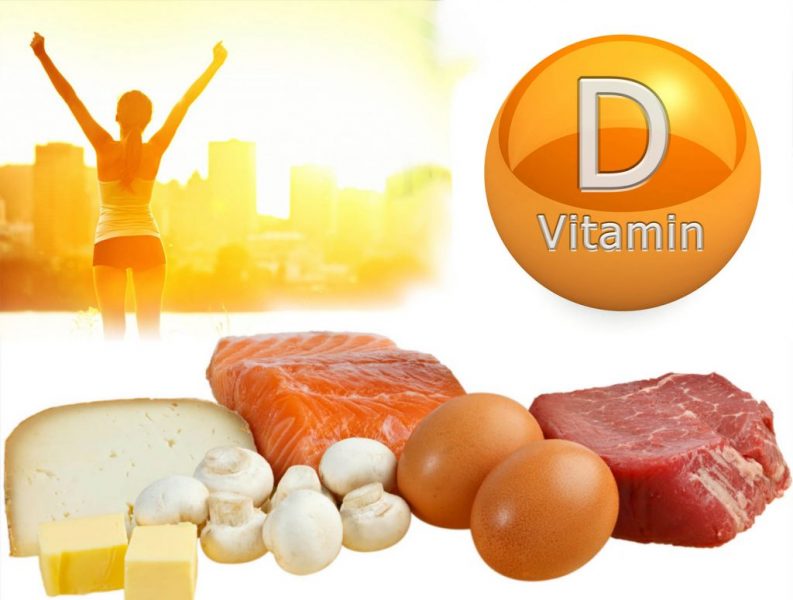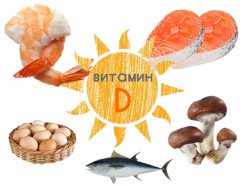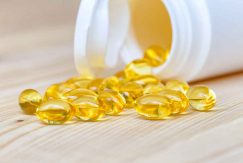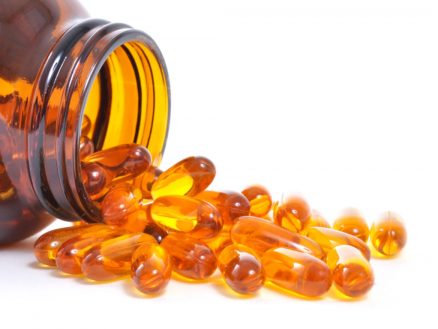Usually, parents give vitamin D drugs to their babies as a prophylactic for rickets. However, this substance is necessary for men and women at any age, especially in autumn and winter. We will find out why vitamin D is so important for adults, and what threatens its deficiency in the body.
Material Content:
What is Vitamin D needed for?
Vitamin D plays a large role in the functioning of the central and immune systems. It has the following effects on health:
- strengthens bones and teeth;
- supports muscle health;
- simplifies cell renewal;
- renews cell tissue;
- prevents autoimmune conditions;
- reduces the development of chronic diseases.
Calciferol can be stored in the body and consumed when necessary. Research scientists have shown that it is involved in the production of hormones and the regulation of metabolism. The organic compound is considered an effective means of preventing tumors in the mammary glands. When used correctly, it helps to avoid depression, obesity, heart disease and nasopharynx.
An increased dose of vitamin D is required in the following situations:
- advanced age;
- bearing a child;
- lactation;
- weak immunity;
- accommodation in latitudes with a cold climate;
- chronic diseases of the kidneys, gall bladder, liver;
- rare exposure to the sun;
- night work;
- living in regions with poor environmental conditions;
- menopause period.
Vitamin D is an important element for an adult body.However, its excess or deficiency is very dangerous.
Daily requirement for adults
The daily rate of calciferol varies depending on the age of the person. The optimal amount of substance per day is displayed in the table:
| Number of years | Norm in ME | Norm in mcg | Maximum norm in ME |
|---|---|---|---|
| 11 to 13 | 600 | 15 | 2500 to 4000 |
| From 14 to 18 | 600 | 15 | 4000 |
| From 19 to 70 | 600 | 15 | 4000 |
| After 70 | 800 | 20 | 4000 |
| During pregnancy and lactation | 600 | 15 | 4000 |
Symptoms of shortage and overdose
Vitamin D deficiency in adults is a fairly common occurrence. A person with hypovitaminosis feels the following symptoms:
- muscle pain;
- fatigue;
- weakness;
- problems with teeth;
- visual impairment;
- sleep disorder;
- feeling unwell;
- long wound healing;
- burning in the throat;
- poor performance.
If you ignore these signs, you can get more serious diseases:
- Rickets. It is accompanied by the formation of a hump, hair loss, excessive sweating.
- Osteoporosis. A slight bruise leads to bone fractures.
- Depression or migraine. They are explained by the development of vitamin deficiency.
 If an overdose of vitamin D occurs in adults, cramps, weakness, nausea, increased blood pressure, difficulty breathing, poor appetite are observed. Atherosclerotic plaques form on the vascular walls due to excess calcium. At the last stage of hypervitaminosis D, the following symptoms appear:
If an overdose of vitamin D occurs in adults, cramps, weakness, nausea, increased blood pressure, difficulty breathing, poor appetite are observed. Atherosclerotic plaques form on the vascular walls due to excess calcium. At the last stage of hypervitaminosis D, the following symptoms appear:
- dehydration;
- sharp weight loss;
- reflex evacuation of the contents of the stomach through the mouth;
- cramps
- depression of the central nervous system;
- the development of bacterial infections.
Excess substances can occur while taking large doses of drugs. Frequent exposure to the sun is not able to provoke hypervitaminosis. A shortage and excess of calciferol can be detected only through a blood test.
The main sources of obtaining a useful element
This organic compound is synthesized in the upper layer of the skin under the influence of sunlight. It penetrates into the blood fluid and is transported to the liver. Therefore, in the summer, calciferol is sufficient for the organs to function normally. In addition to ultraviolet radiation, the element is contained in food. The following foods are enriched:

- fat meat;
- fish (herring, mackerel, salmon, and flatfish families);
- liver of pigs, cattle;
- egg yolk;
- dairy products;
- mushrooms;
- sunflower and ghee;
- seaweed;
- potatoes;
- parsley;
- red and black caviar.
Vitamin D is the common name for substances that have the properties of sterols. The list includes the following elements:
- D2. It is used as an additive in the production of bakery products, milk mixtures. It is called ergocalciferol.
- D3. Cholecalciferol enters the bloodstream from animal products.
- D4. Dehydrocholesterol does not allow an excess of calcium and phosphorus.
- D5. Sitocalciferol is found in wheat grains.
 D2 and D3 are the most active forms of organic compounds. They are obtained with food and through the skin with ultraviolet radiation. Other species have relatively low biological activity.
D2 and D3 are the most active forms of organic compounds. They are obtained with food and through the skin with ultraviolet radiation. Other species have relatively low biological activity.
D1 is created as a result of chemical synthesis. It does not occur in nature. Speaking about preparations with vitamin D, all of the listed forms are meant. In general, they are called "calciferol."
Best Vitamin D Preparations
The following drugs are among the most famous and popular preparations containing a useful organic compound:
- Aquadetrim. This is a safe tool that is suitable even for infants. Vitamin D in drops is taken regardless of the meal, dissolving in water.
- Alpha D3-Teva. Allowed for children over six years of age and adults. You can take vitamin D 1-2 capsules with a liquid.
- Calcium D3-Nycomed Forte. Release form - tablets with mint or citrus flavor. They are taken after or during meals.
- Vitamin D3. Accepted similarly to Aquadetrim.
- Wigantol. The oil solution is suitable for infants. Prescribed as a prophylactic against rickets and osteoporosis.
- Oksidevit. Alfacalcidol based oil composition.
- Now Foods, Vitamin D3 High Potency.The jar has 180 capsules that meet the quality standard and are easily absorbed in the body.
- Solgar, Vitamin D3 1000 IU. The substance is obtained from the liver of fish - pollock, haddock, cod.
- 21st Century, High Potency D3. The tablets are convenient for taking, the jars are enough for a long time.
- Colecalciferol. Available in the form of capsules, drops, tablets. Replenishes vitamin D3 deficiency.
Regardless of the form of release, it is recommended to take pharmacy drugs only as directed by a doctor.
Indications for use
Group D vitamin is prescribed for therapeutic and prophylactic purposes. It is prescribed as part of a comprehensive treatment for diseases of the skeletal system and calcium deficiency. The main indications of the substance include:
- rickets;
- osteoporosis;
- osteomyelitis;
- chronic pancreatitis;
- systemic lupus erythematosus;
- arthritis;
- osteomalacia
- hypothyroidism;
- fracture;
- liver disease;
- gastritis or chronic pancreatitis;
- lack of organic compounds in the body;
- diathesis;
- tuberculosis.
Calciferol is prescribed for psoriasis, conjunctivitis, epilepsy.
Instructions for use and dosage
The dosage schedule depends on the person's age:
- children from five to 13 years old - 2-3 mcg;
- persons over thirteen years old - from 2 to 5 mcg;
- patients of retirement age - from 12 to 15 mcg;
- nursing mothers - 10 mcg.
The maximum amount of vitamin for an adult is 15 mcg. Prophylactic administration can be continued for 1-2 years. In this case, alternate monthly courses with an interval of 4-8 weeks.
Tablets are drunk with or immediately after a meal. It is permissible to pour an oil solution onto a slice of bread and eat. It is recommended to take vitamin D with retinol, tocopherol, thiamine, riboflavin, folic acid.
Interaction with other substances
Given the mechanism of action of drugs, it is necessary to take into account the characteristics of the combination of vitamin with other drugs. In patients taking cardiac glycosides, the risk of developing hypercalcemia, cardiac arrhythmia is increased. Therefore, it is important to control the level of the element in the blood.
Anticonvulsants, which increase the activity of liver enzymes, reduce the effectiveness of the organic compound. Therefore, the dose of calciferol must be increased. Its absorption worsens when combined with paraffin oil, antacids with aluminum content. Concomitant use with laxatives leads to the development of hypermagnesemia. This applies to patients with renal failure.
Best element interacts with vitamins A, B, C, E, calcium and magnesium. Complex preparations are effective against bone diseases, and qualitatively absorbed minerals improve blood coagulation and heart function.
Contraindications and side effects
Despite all the benefits of this substance, there are a number of pathologies in which the use of such drugs is prohibited:
- gastric ulcer;
- excess calcium in the blood fluid;
- active tuberculosis;
- inability to excrete urine by the kidneys;
- heart disease;
- ischemia;
- chronic kidney disease.
Carefully take vitamin D for atherosclerosis, pregnancy, heart failure, while breastfeeding.
As side effects are:
- irritability;
- feeling of nausea;
- decreased performance;
- pressure reduction;
- persistent weakness;
- the formation of calcifications.
You can not take drugs with vitamin D uncontrollably. Moreover, synthetic analogues of the substance adversely affect the human nervous system. Therefore, it is important to control the level of calciferol in the blood. You can strengthen your health,

























